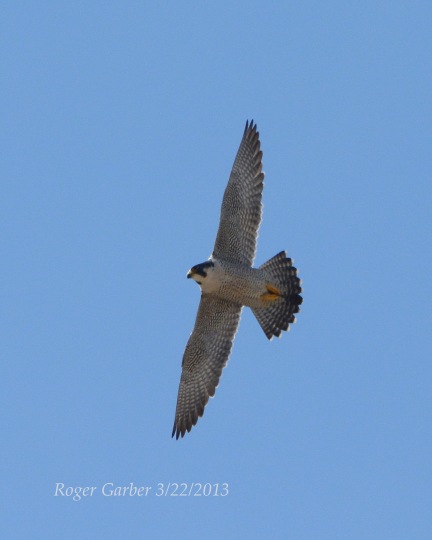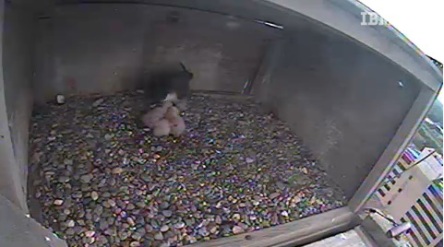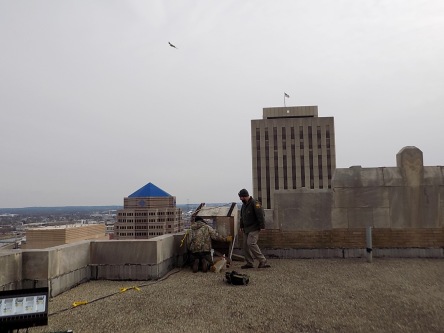
By ELIZABETH TOTH
Unfortunately, all three fledglings have experienced trouble. Each of the young falcons has struck a building in downtown Dayton while learning to fly. The first chick was injured on July 9 and the second fledgling struck a building on July 13.
The first two injured fledglings were doing fine and able to be released in downtown Dayton on July 17. The third fledgling is now at Glen Helen Raptor Rehabilitation center in Yellow Springs with an injured wing and will require additional rehabilitation before its flight capabilities can be evaluated.
Editor’s Note: The Falcon Cam has been discontinued due to a lack of activity at the nesting site.
Elizabeth Toth is the Associate Curator of Live Animals at the Boonshoft Museum of Discovery.





 The third chick is a bit smaller than the two others that hatched 5 and 7 days ago. The parents take care of the chicks keeping them warm and providing food for them. The chicks are unable to thermoregulate well for the first 10 days of their lives.
The third chick is a bit smaller than the two others that hatched 5 and 7 days ago. The parents take care of the chicks keeping them warm and providing food for them. The chicks are unable to thermoregulate well for the first 10 days of their lives.
 e nest. This rocking opens the feathers that have curled over the brood patch and puts their skin in contact with the eggs.
e nest. This rocking opens the feathers that have curled over the brood patch and puts their skin in contact with the eggs.
